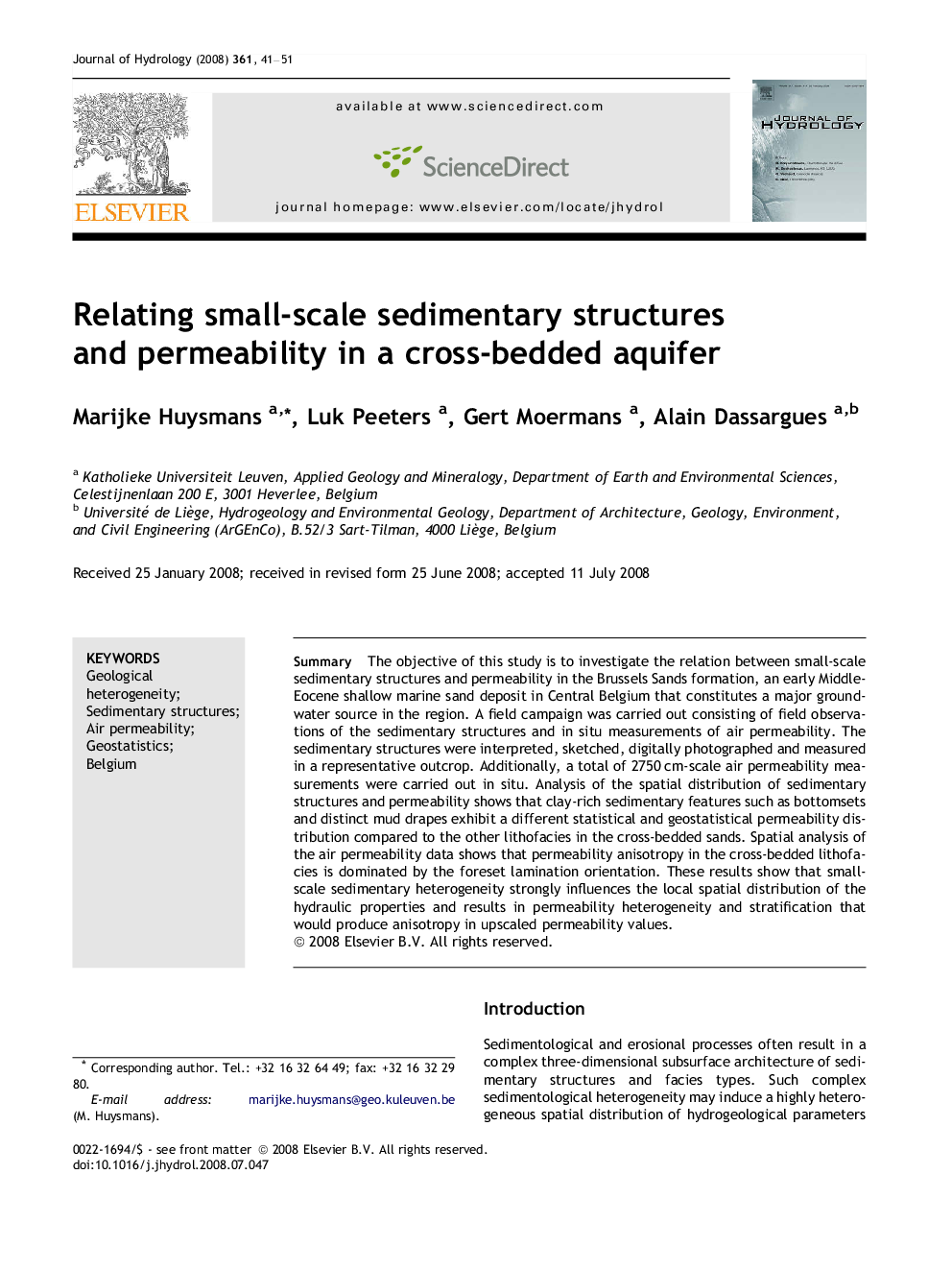| Article ID | Journal | Published Year | Pages | File Type |
|---|---|---|---|---|
| 4578987 | Journal of Hydrology | 2008 | 11 Pages |
SummaryThe objective of this study is to investigate the relation between small-scale sedimentary structures and permeability in the Brussels Sands formation, an early Middle-Eocene shallow marine sand deposit in Central Belgium that constitutes a major groundwater source in the region. A field campaign was carried out consisting of field observations of the sedimentary structures and in situ measurements of air permeability. The sedimentary structures were interpreted, sketched, digitally photographed and measured in a representative outcrop. Additionally, a total of 2750 cm-scale air permeability measurements were carried out in situ. Analysis of the spatial distribution of sedimentary structures and permeability shows that clay-rich sedimentary features such as bottomsets and distinct mud drapes exhibit a different statistical and geostatistical permeability distribution compared to the other lithofacies in the cross-bedded sands. Spatial analysis of the air permeability data shows that permeability anisotropy in the cross-bedded lithofacies is dominated by the foreset lamination orientation. These results show that small-scale sedimentary heterogeneity strongly influences the local spatial distribution of the hydraulic properties and results in permeability heterogeneity and stratification that would produce anisotropy in upscaled permeability values.
